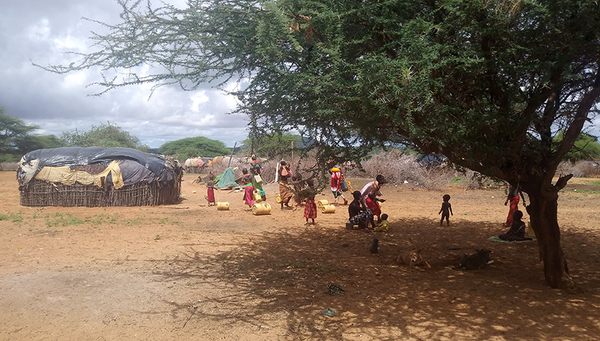News Detail
Can the consistent use of water filters be promoted?
September 19, 2023 |
Around two billion people drink water from sources that are contaminated with faeces and are breeding grounds for germs. Water filters can help improve drinking water quality in affected areas by successfully removing germs that include bacteria, viruses and protozoa which cause diarrhoea. Not only can diarrhoeal diseases be prevented, but child mortality can also be significantly reduced. However, for people in need of protection from the dangers of contaminated water, they must also use the filtering devices consistently. This is not always the case.
Previous studies have found that different factors influence the use of such filters: Technical knowledge as well as psychological and social factors within households play an important role. Especially in emergency situations, such as a prolonged drought, the people concerned are preoccupied with more pressing issues than filtering their drinking water - but that is precisely when it would be particularly important.
What prevents people from using filters?
In collaboration with a development organisation, a team of Eawag researchers led by George Wainaina analysed the reasons why water filters are used or not. At the time of the study in 2018, there was a prolonged drought in the Marsabit region of Northern Kenya. This led not only to increased mortality, but also to regular conflicts over resources, as well as insecurity and high food prices. More than half of the water resources in Marsabit were also contaminated with faeces.
The researchers provided a total of 107 households with four different filtration devices. Two of them had only one container for the unpurified drinking water and two each had a second container for the purified water. After a few months, the researchers interviewed the households about their experiences and user behaviour. «What was exciting for us was that there were different reasons for the different filters not being used», says Wainaina. Above all, the availability of spare parts was the biggest hurdle for regular use of the filter devices with only one container. For the filters with two containers, size played a major role and whether and how it fits into the living space.
The environment is a significant factor
For both types of filters, however, it was very important how the environment (family, neighbours) assessed the respective filter. As soon as people in the immediate circle considered it unnecessary or even unacceptable to have to filter the water, the filters were used less frequently. However, the filter systems were used consistently when households were already familiar with the type of filter.
The results offer important clues on how to avoid barriers to use in the future. If all necessary technical, social and psychological aspects are taken into account, this will enable a safe drinking water supply in the affected regions in the longer term. It would be important not only to train people optimally, but also to ensure that spare parts are cheap and easy to obtain. This is where the industry would be called upon.
According to Wainaina, it would be exciting to analyse in a follow-up study whether the filters are used more often if the filter system is already known - as opposed to a completely new technology. «I would also like to visit the households again to see whether the filters have become established in the meantime».
Original publication
Cover picture: Residents bringing water home in a village in Northern Kenya. Image: Eawag, George Wainaina

